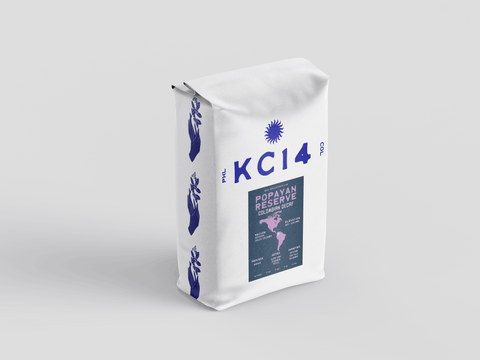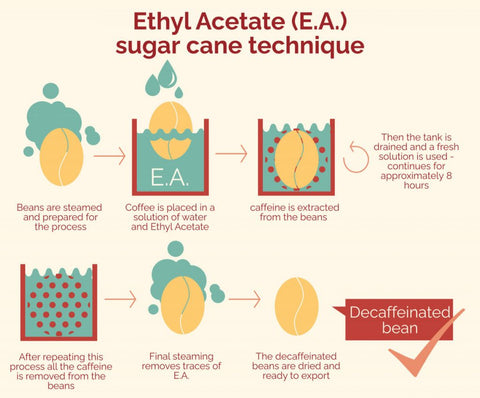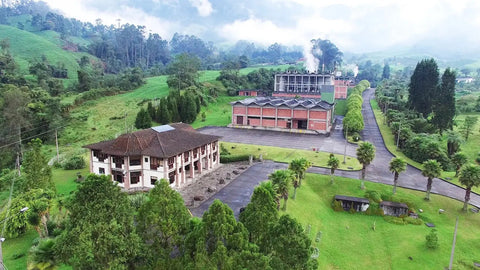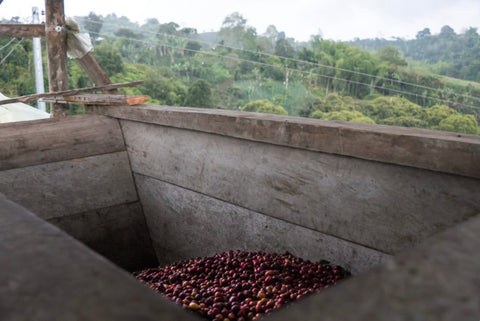

Colombia Decaf Popayan Reserve
Popayan, Cauca
Caturra
Castillo
Colombia
1.500 - 2.070 M.A.S.L
Ethyl Acetate (EA)
Sugar Cane
Cinnamon
Toffee

The Journey to a Decaf
This coffee is produced by selected farms in Popayan region. Coffee is brought from growers in dry parchment, it is later milled at Popayan and transported to Caldas to be decaffeinated.
This decaffeination process in unique, the caffeine is extracted from the bean using sugar cane and water which enhances sweetness, while maintaining coffee attributes.
This technique was developed in Colombia.
The Journey
Discover, Connect, Enjoyalso known as sugar cane ethyl acetate (EA) decaf, is a natural method for removing caffeine from coffee beans. Originating in Colombia, where sugar cane is abundant, the process begins by fermenting molasses derived from sugar cane. During fermentation, bacteria generate acetic acid, akin to the process of fermenting coffee. Alcohol is then introduced to produce ethyl acetate.
To decaffeinate coffee using this method, green coffee beans are steamed to increase their moisture content, causing them to swell and facilitate caffeine extraction. Ethyl acetate is added to the mix, dissolving the caffeine in the coffee. The beans are subsequently washed with water and dried to their original moisture level of around 11-12%. Notably, EA decaffeination avoids high pressure and heat, preserving the coffee's natural flavors and terroir characteristics, resulting in a sweet and vibrant decaf option.
Descafecolis the only decaffeination plant in the Andean region of Colombia. The plant relies entirely on the pure water from the Navado el Ruis (a snow-capped volcano on the border of the departments of Caldas and Tolima) and natural ethyl acetate from sugar cane plants in Palmira, Colombia.
Ethyl acetate is an organic compound (C4H8O2) with a sweet smell—it’s created during fermentation and contributes to what’s often described as the “fruitiness” in a young wine.
PopayánThe city of Popayán is the capital of the state of Cauca, in the southern half of Colombia. The surrounding coffee region is on the plateau where the Andes mountain range reaches southern Colombia from Ecuador. From there, the Andes breaks into the three separate mountain ranges (or, cordilleras) that cross the country from south to north.
The Cauca and Popayan plateau is at an average of 1,600 meters above sea level and includes the neighboring Purace volcano (pictured above), which has over time has produced the region's rich soil.
Coffee farms in the region are usually smaller than 5 hectares. The region is also home to several indigenous groups that have been growing coffee for decades.
There are two rainy seasons that produce a main crop and a mid crop — or mitaca — guaranteeing fresh coffee year round. The main crop is between April and December, and the somewhat smaller mid crop is between December and January. All cherries are handpicked and then pulped and washed on the farms. The dry parchment is then sold to a dry mill that arranges the selection and export.
Coffees from near Popayán — as a result of the area's soil conditions, altitude and washed processing — generally have a very nice aroma, a medium acidity and a medium body. These features combine to present a pleasant, sweet, chocolate aftertaste.




